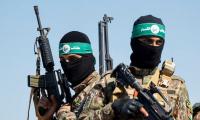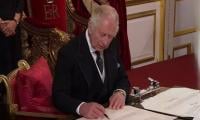The international community is all set to commemorate the World Red Cross Red Crescent (RCRC) Day on May 8 under the theme ‘Everywhere for Everyone’.
The day falls on the birthday [May 8, 1828] of Swiss Noble Laureate Sir Henry Dunant, who founded the Red Cross in 1863. The initiative later morphed in to International Red Cross and Red Crescent Movement.
The Movement is a network of 192 national societies, International Committee of the Red Cross (ICRC) and International Federation of Red Cross & Red Crescent Societies (IFRC) that save and improve lives around the world. Each national society covers the entire country.
Being a part of the RCRC [referred to as a national society], the Pakistan Red Crescent Society [PRCS] is the leading humanitarian organization [in Pakistan] that helps communities become resilient and to prepare for, respond to, and recover from natural disasters, humanitarian emergencies and health crises countrywide.
Since, its formation in 1947, the PRCS’s skilled and highly-motivated manpower and volunteers have worked in areas affected by man-made or natural disasters [quakes, floods, landslides etc] providing succor, shelter, financial and psychosocial support and RFL [Restoring Family Link] services to hundreds of thousands of people countrywide.
It’s a feather in the cap of the PRCS that it has always been at the beck and call of the nation and never failed to deliver when it came to dealing with natural or man-made disasters, drawing accolades and acknowledgment from both local and international humanitarian organizations.
It’s on record that the PRCS’s trained professionals and volunteers always reached distressed areas under the slogan of ‘First to Reach, Last to Leave’ and didn’t even shy away from flirting with potential dangers.
The PRCS’s achievements are substantial in magnitude needing reams to be written down to the minutest detail. A brief description of these achievements is that during 2010 deadly floods Rs9 billion worth of relief was provided to over 4.1 million victims, while during 2011 floods Rs260 million worth of goods were supplied to 0.29 million people out of a total of 8.9 million affected people countrywide. Overall, the Society has provided Rs24 billion worth of assistance to more than 10 million beneficiaries since 2005 with the help and assistance of its national societies.
In addition to the countrywide relief and rehabilitation activities, the First Aid Training (FAT) program, the Cash Transfer Program (CTP), the Regional Blood Donor Centers [RBDCs], the National Ambulance Service College, Mine Risk Education program and the RFL program have been doing a huge service to the country.
Under the FAT program, hundreds of thousands of employees from government and semi-government departments, corporate sector entities, civil and paramilitary law enforcement agencies, students of public and private educational institutions, volunteers and journalists have been trained under the slogan of ‘A First Aider in Every Home’.
Under the Cash Transfer Program (CTP), substantial cash grants amounting to millions of rupees have been provided to marginalized people and those living below the poverty line countrywide to set up their own businesses in order to fend for themselves and their families in a dignified way.
The RBDCs are serving the humanity by donating thousands of pints [also of rare groups] annually to all major and small public and private hospitals and health centers for patients mostly suffering from hemophilia, thalassemia, cancer, liver failure and other complications.
As for the National Ambulance Service College, the first ever college in the country’s history affiliated with the National Ambulance Service College, Dublin, the first batch of 36 Emergency Medical Technicians (EMTs) has passed out to assist in the delivery of high quality and effective pre-hospital clinical care and patient transportation.
Under its RFL program, the PRCS has reunited thousands of missing persons with their families at home and abroad with the help and assistance of its partners. The enormity of challenges and tasks the PRCS has been successfully dealing with has already put a strain on its kitty due to limited financial support by the government. At present, the PRCS gets a paltry sum of Rs10 million annually from the government.
The escalating humanitarian crisis in the Middle East has caused its financial constraints to aggravate, as its partners from the Movement (ICRC, IFRC and other national societies) have diverted a major part of their funding to this troubled region.
In the obtaining situation, the PRCS is struggling hard to keep dozens of ongoing projects afloat, especially those going on in the seismic zones. Thousands will suffer in case funding from its international partners reduces further or choke up in the pipeline.
The PRCS is the humanitarian face of Pakistan and the picture being shown to the international community must not distort because of a lack of funding. Here’s a set of recommendations for the government to help the PRCS to continue its humanitarian activities without interruption.
RECOMMENDATIONS:
The government ought to increase the annual funding from Rs10 million to at least 100 million which will not put any strain on the state kitty, as the government is already doling out billions of rupees to many loss-making national institutions.
n If the funding can’t be increased, then a new column should be introduced in the utility bills (gas, power and water) for charging at least Rs10 from the consumers, as the PRCS service, dedication and commitment to humanity is a reality visible to all.
n All educational institutions countrywide have been charging Rs10 under Hilal-e-Ahmar Fund since the creation of Pakistan. The amount has surged to billions of rupees but it has never been transferred to the PRCS. Crediting this amount will beef up the PRCS’s coffers, paving way for it to continue humanitarian activities without interruption.
n The PRCS is a platform that, if given due recognition and support at the government level, can be supportive in terms of training and building the expertise and capacity of other organizations across the world being a part of 192 national societies operating under the RCRC Movement.
n As the Red Cross Red Crescent is the flagship all over the world in first aid, blood donation and volunteerism, the same role should be assigned to the PRCS by the government.
The Cross and Crescent are playing a magnificent role to help those who need the most across the world without any color, creed and race. They are an asset that we need to support and protect, perhaps a little better than we do currently.
The writer is the Principal Information Officer at PRCS
Pilgrims pray around the Kaaba at the Grand Mosque, in Saudi Arabia's holy city of Makkah, during the annual Haj...
An aerial view of Islamabad is seen in this undated image. — X/@Islamabadies/File— the report that the historical...
This representational image shows a burger and chips. — Unsplash/FileIslamabad : As Pakistan finds itself in the...
Firefighters douse the fire at a shopping mall in Karachi on November 25, 2023. — AFPThe leading Emergency Service...
Pakistan Academy of Letters building seen in this image. — APP/FileIslamabad: The Pakistan Academy of Letters has...
A young boy is riding a motorcycle with his father seated with him on the way to a road in Lahore in November 19,...







